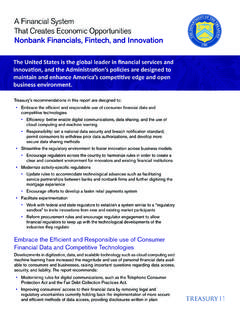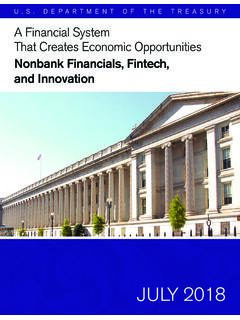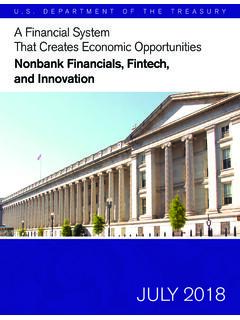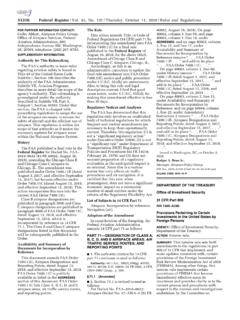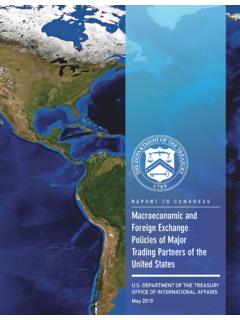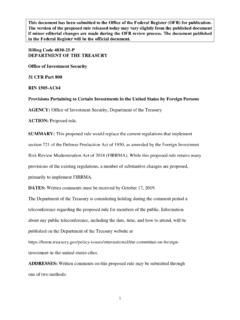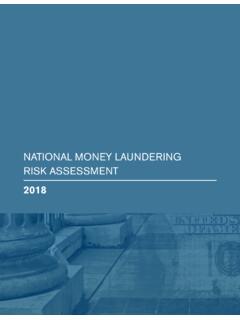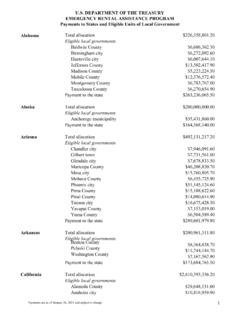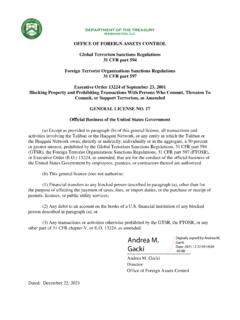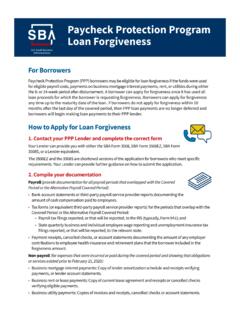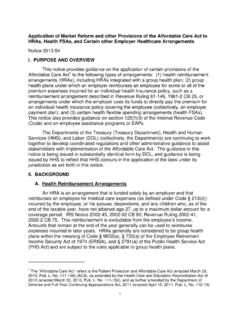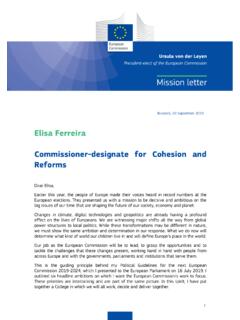Transcription of United States Postal Service: A Sustainable Path Forward
1 United States Postal Service: A Sustainable Path Forward Report from the Task Force on the United States Postal System DECEMBER 2018. United States Postal Service: A Sustainable Path Forward Report from the Task Force on the United States Postal System December 4, 2018. DEPARTMENT OF THE TREASURY. WASHINGTON, December 4, 2018. The Honorable Donald J. Trump The White House Washington, DC. Dear Mr. President: On April 12, 2018, you signed Executive Order 13829, which established the Task Force on the United States Postal System to evaluate the operations and finances of the United States Postal Service (USPS) and develop recommendations for administrative and legislative reforms for the Postal system.
2 The goal of these recommendations is to identify a path for the USPS to operate under a Sustainable business model, providing necessary mail services to citizens and businesses, while competing fairly in commercial markets. The Task Force conducted extensive outreach to stakeholders and performed in depth research and analysis in order to understand the wide range of challenges facing the USPS. In addition to our August 10, 2018, submission, the Task Force presents here its findings and full list of recommendations. We believe these are the first steps Forward in creating a Sustainable business model under which the USPS can continue to provide necessary mail services for all Americans.
3 Sincerely, Steven T. Mnuchin Secretary of the Treasury Chairman, Task Force on the United States Postal System Table of Contents Executive Summary .. 1. A. Task Force on the United States Postal System ..1. B. Unsustainable Financial Path ..2. C. Scope of Work ..3. D. Summary of Recommendations ..4. 7. A. History of the United States Postal Service ..7. B. Role of the USPS in the Economy ..9. C. Current State of the D. International Postal Models ..29. Mission and Business Model .. 32. A. Historical Business Model ..32. B. Creation of a New Business Model ..33. Universal Service Obligation.
4 39. A. Overview ..39. B. Background ..39. C. Findings and Recommendations ..41. Mail and Package Markets .. 46. A. Overview ..46. B. Background ..47. C. Findings And Recommendations ..50. Operational Structure, Governance, and Long-term Liabilities .. 56. A. Overview ..56. B. Background ..56. C. Findings and Recommendations ..60. Appendix A Task Force Recommendations ..64. Appendix B Participants Acronyms and Abbreviations ..69. Executive Summary A. Task Force on the United States Postal System On April 12, 2018, President Donald J. Trump created the Task Force on the United States Postal System.
5 The Task Force is chaired by the Secretary of the Treasury and includes the Director of the Office of Management and Budget and the Director of the Office of Personnel Management. The Task Force was directed to evaluate the operations and finances of the United States Postal Service (USPS) and submit findings and recommendations to the President. The Task Force conducted a robust analysis of the USPS's operations and finances that was informed by an extensive review of information provided by the USPS, academic literature, and industry studies; a review of legislative history and meetings with members of Congress and the Congressional committees of jurisdiction; and meetings with a wide range of stakeholders.
6 Per the Executive Order, the Task Force studied: i. The expansion and pricing of the package delivery market and the USPS's role in competitive markets;. ii. The decline in mail volume and its implications for USPS self-financing and the USPS monopoly over letter delivery and mailboxes;. iii. The definition of the universal service obligation in light of changes in technology, e-commerce, marketing practices, and customer needs;. iv. The USPS's role in the economy and in rural areas, communities, and small towns; and v. The state of the USPS business model, workforce, operations, costs, and pricing.
7 The recommendations of the Task Force, presented within this document, promote commerce and communications throughout the United States , without shifting additional costs to the taxpayers, and include proposed administrative and legislative reforms to create a Sustainable business model for the USPS. Outreach and Research The Task Force met with a wide range of stakeholders representing the USPS workforce;. commercial, non-profit, and residential users of the USPS's services; and the USPS's suppliers and competitors. A list of organizations and individuals that provided input to the Task Force in connection to this report appears in Appendix B.
8 1. United States Postal Service: A Sustainable Path Forward As directed by the Executive Order, the Task Force consulted with the Postmaster General;. the Chairman of the Postal Regulatory Commission (PRC); the Attorney General on issues relating to government monopolies operating in the commercial marketplace; the Secretary of Labor on issues relating to workers' compensation programs; and state, local, and tribal officials. The Task Force also conducted a thorough review of data, research, and published material from public and private sources, including from the USPS, the Government Accountability Office (GAO), and the USPS Office of Inspector General (OIG).
9 B. Unsustainable Financial Path The USPS is a $71 billion enterprise that collects, processes, transports, and delivers 146. billion pieces of mail and packages to nearly 159 million households and businesses The mission of the USPS is broadly defined via the universal service obligation . (USO), which is intended to ensure that all citizens and businesses in the United States receive a minimum level of Postal services at a reasonable price. The USPS has been losing money for more than a decade and is on an unsustainable financial path. The USPS is forecast to lose tens of billions of dollars over the next decade.
10 Further, as of the end of FY 2018, the USPS balance sheet reflects $89 billion in liabilities against $27 billion in assets a net deficiency of $62 The shift toward digital correspondence and the corresponding decline in USPS mail volumes have been compounded by caps on mail pricing, leading to mail revenue declines of around 4 percent per year. Additionally, the USPS has not been able to sufficiently reduce costs to offset declines in revenue, resulting in net losses totaling $69 billion between FY. 2007 and FY 2018. Although package volumes are increasing due to the rise of e-commerce, package revenues alone cannot offset the decline in mail revenues.
